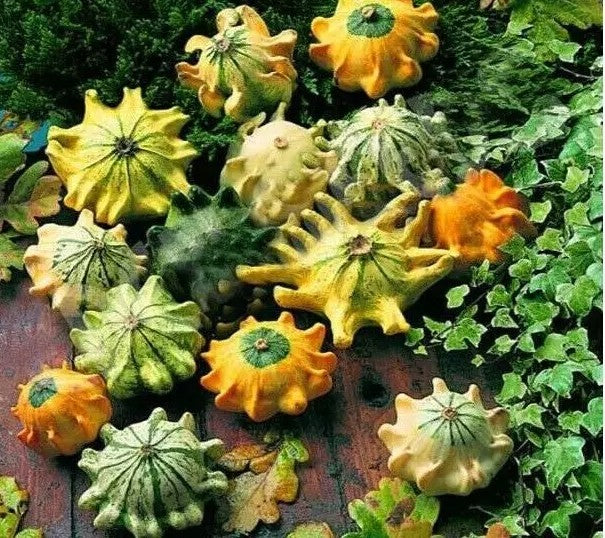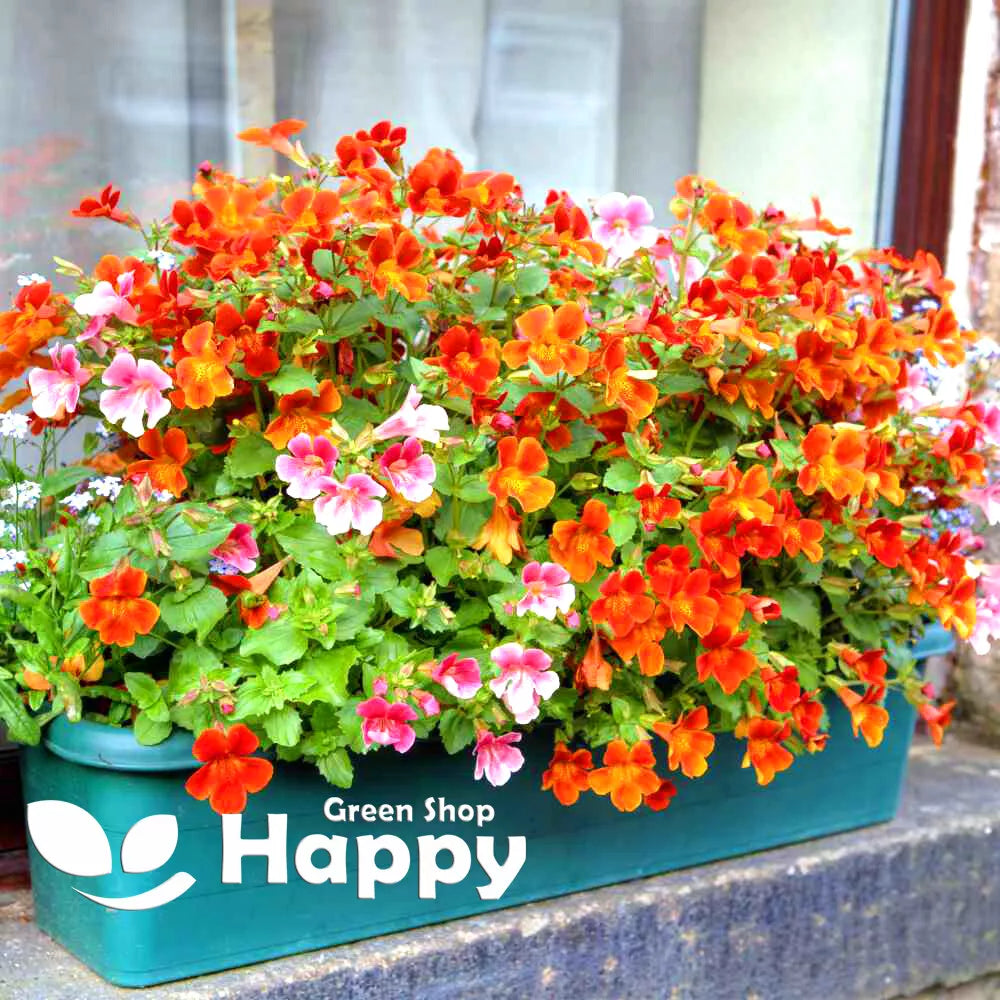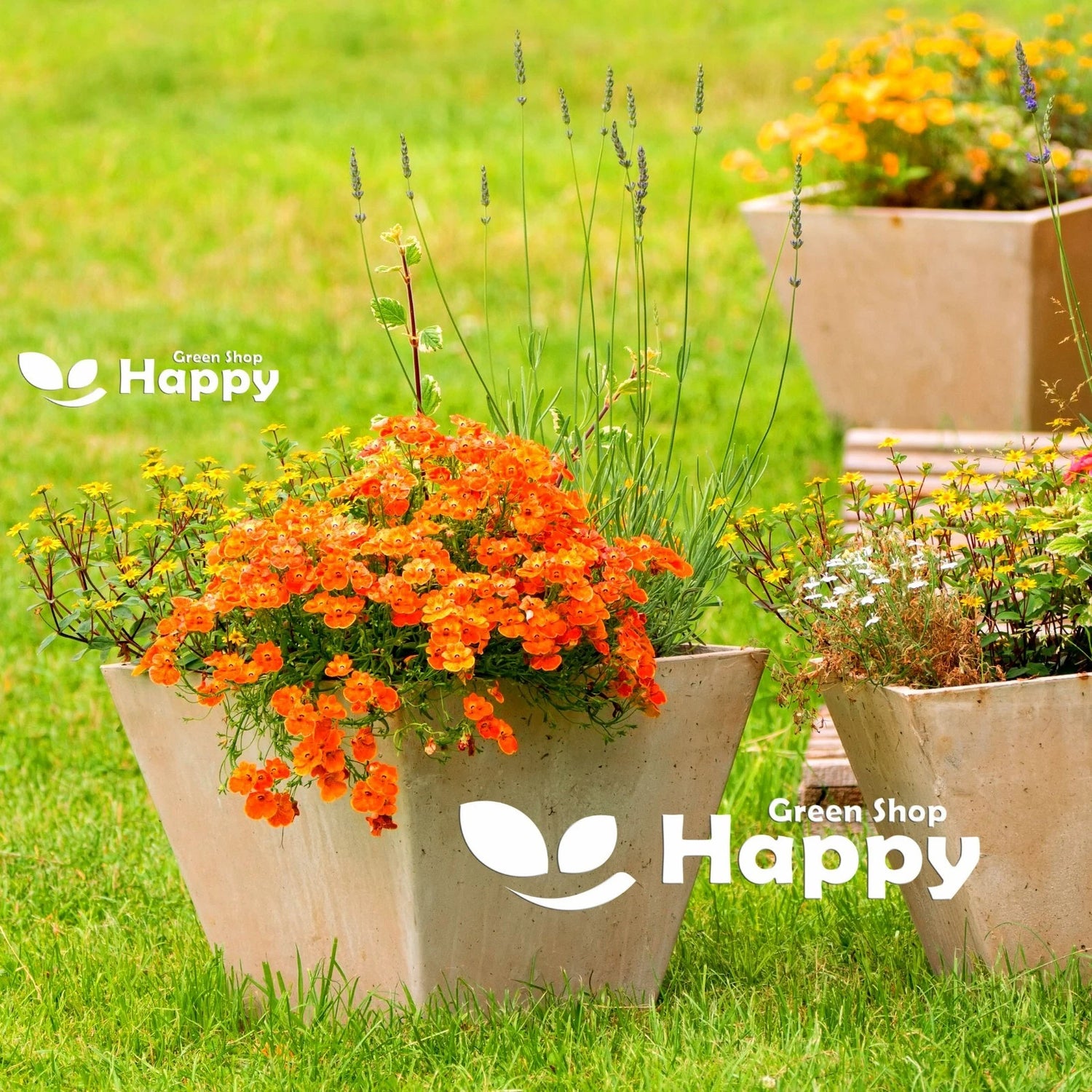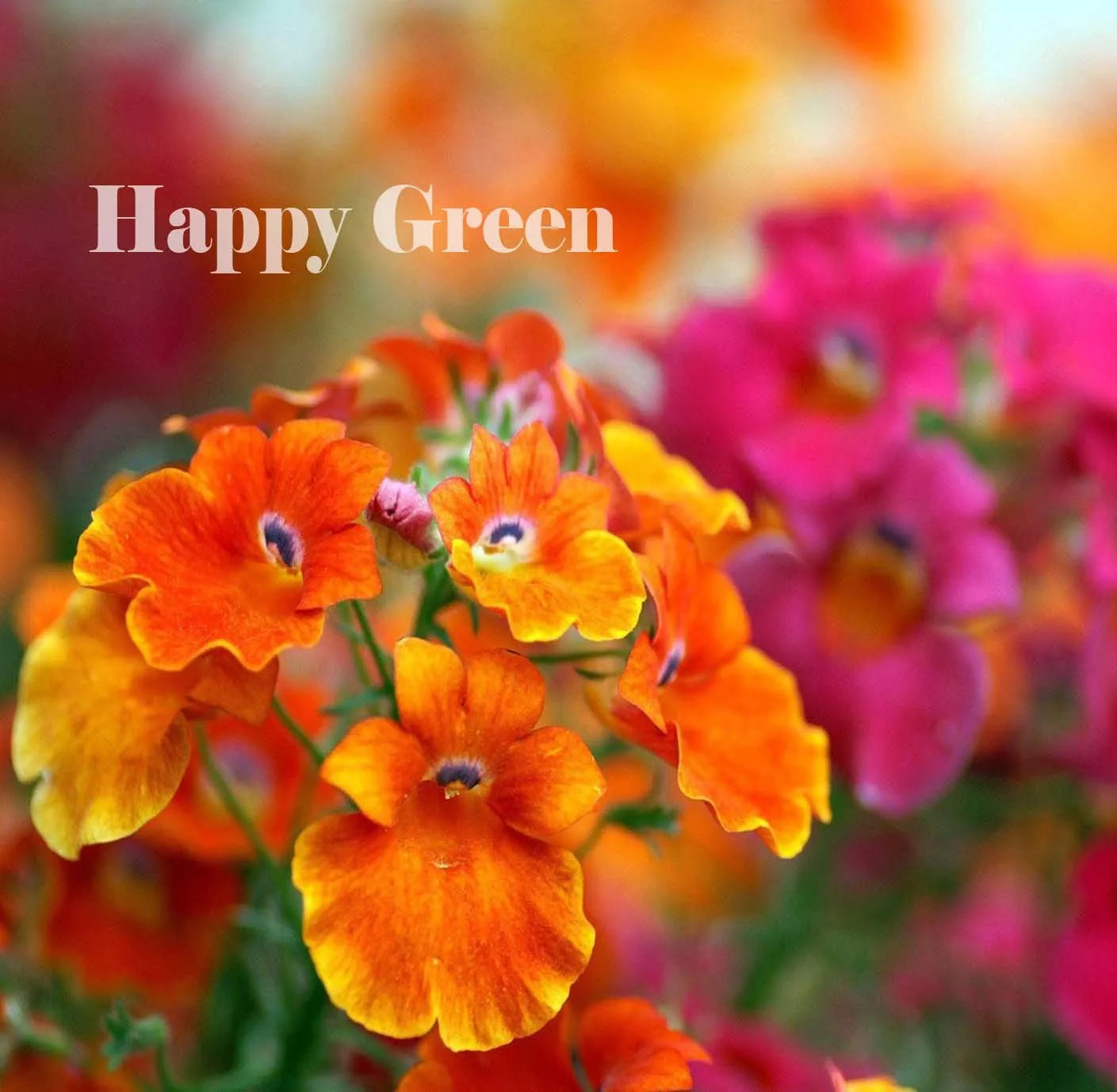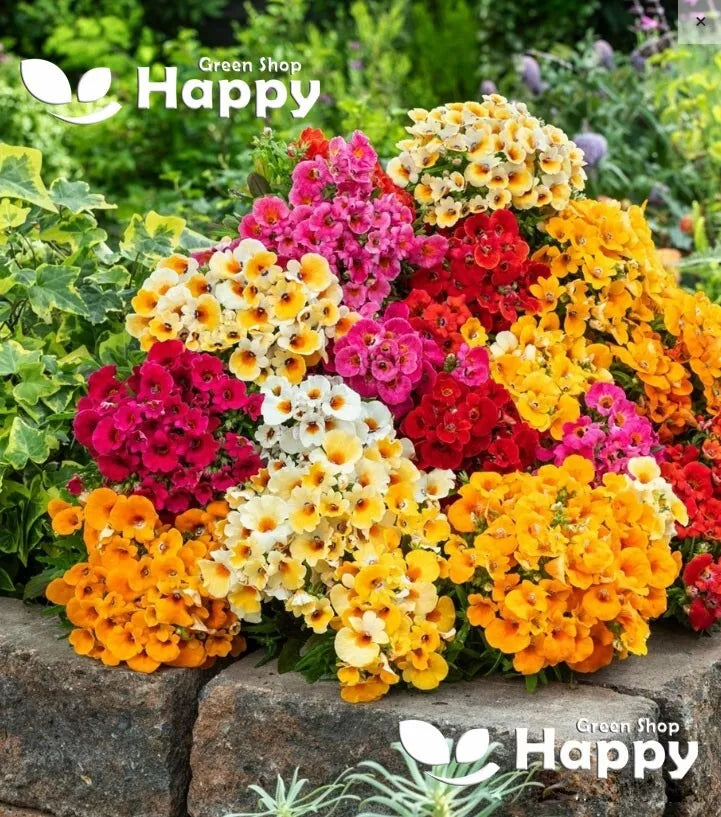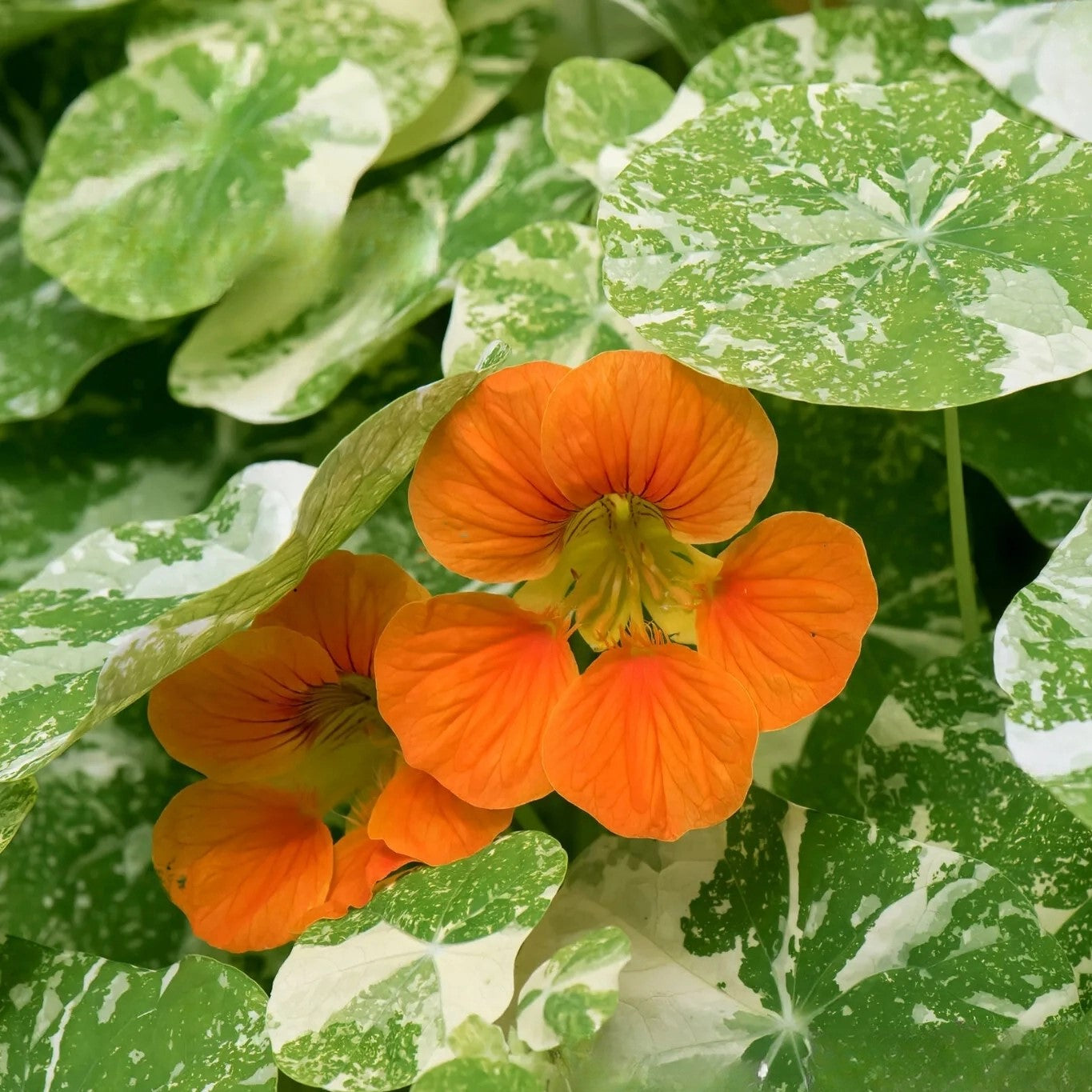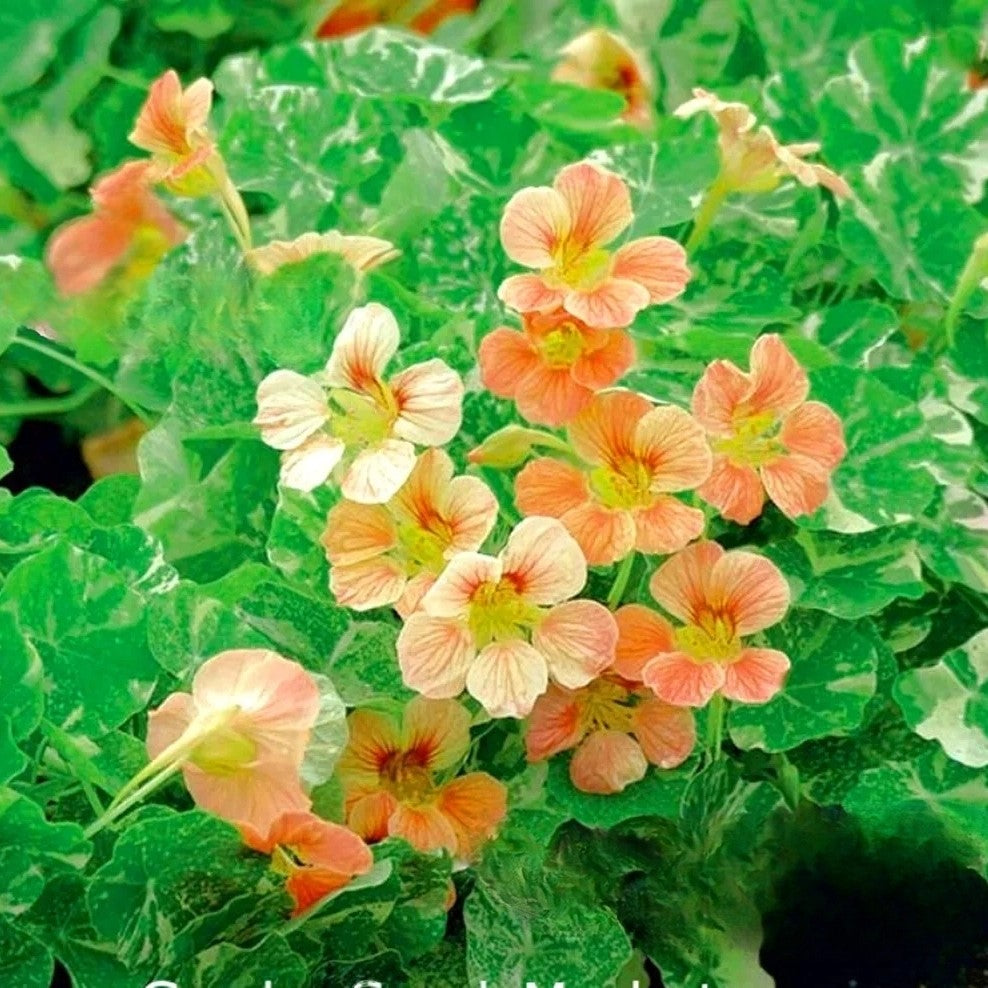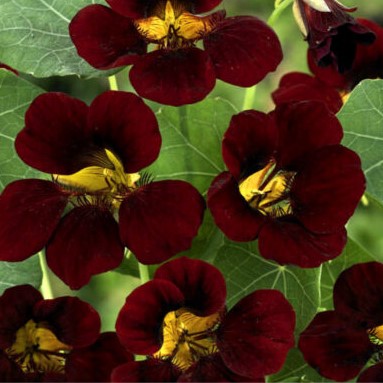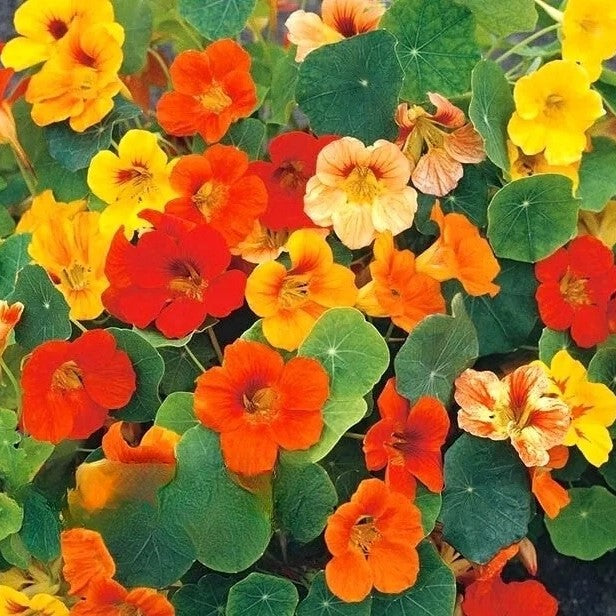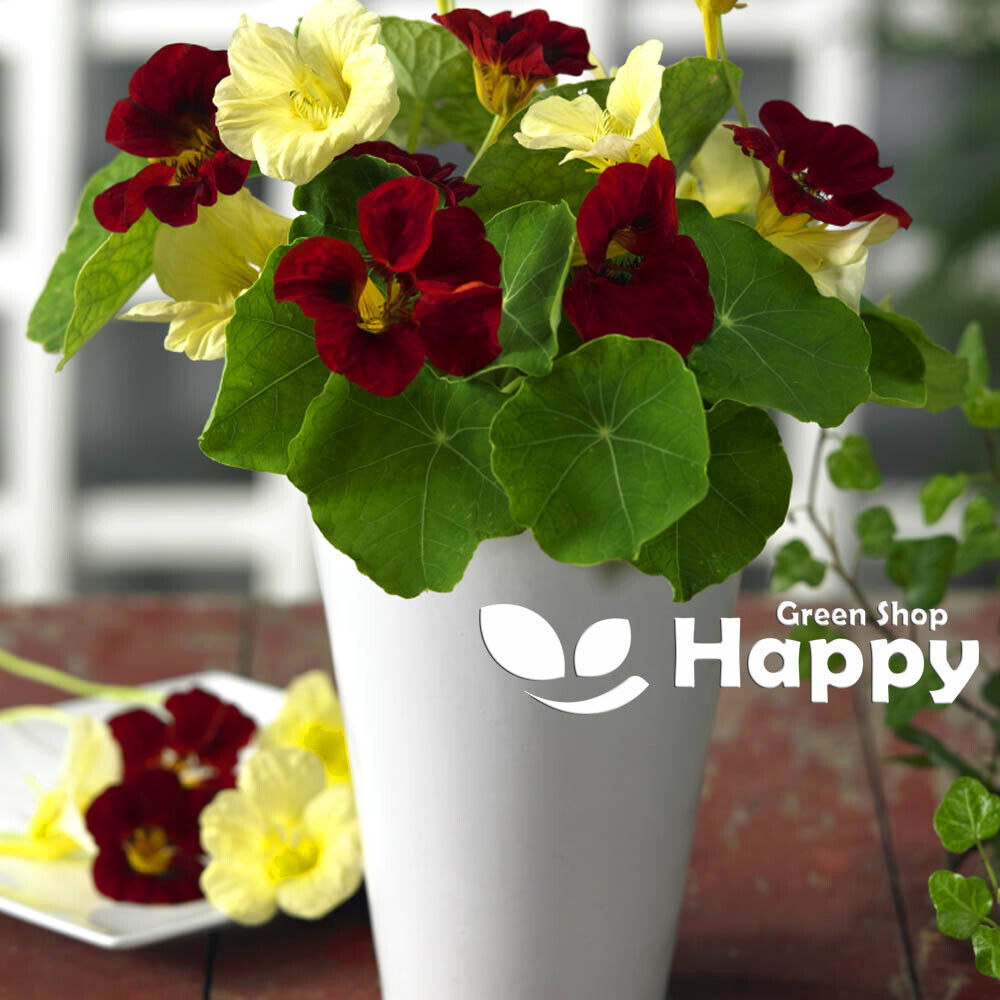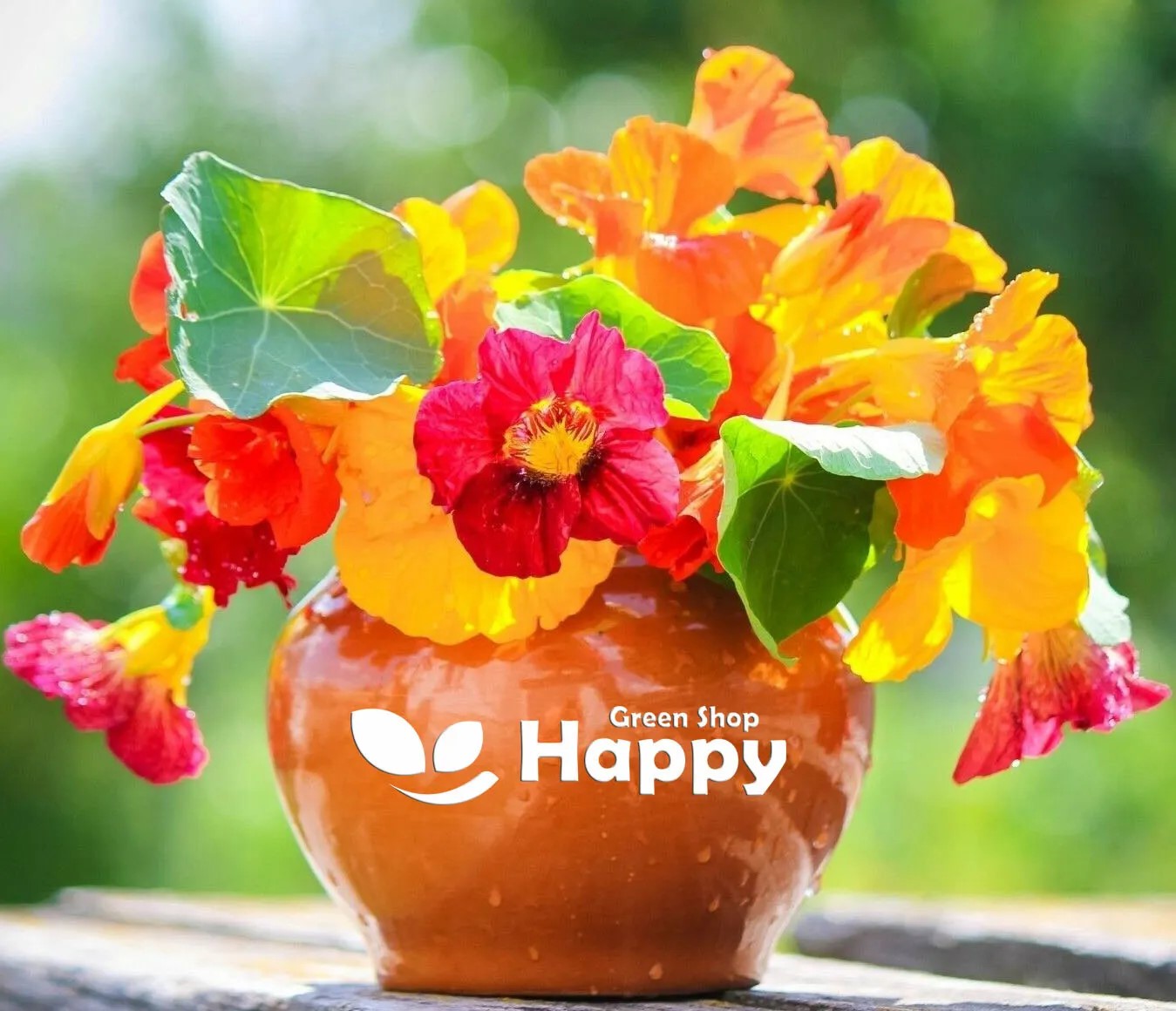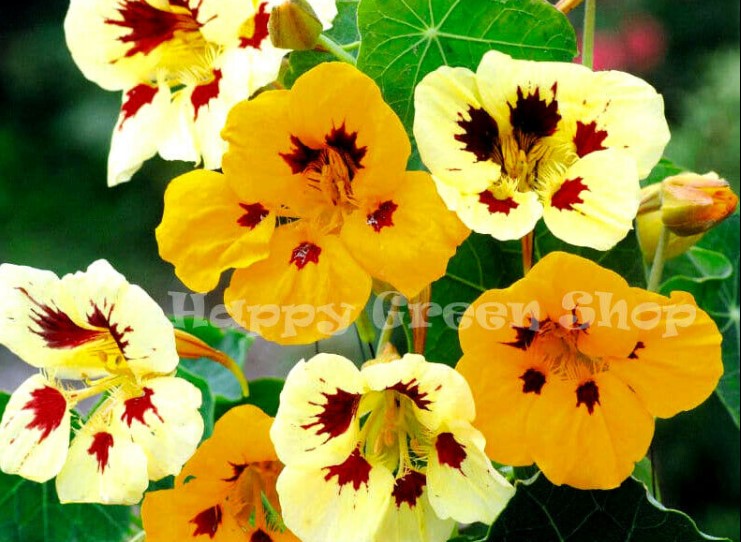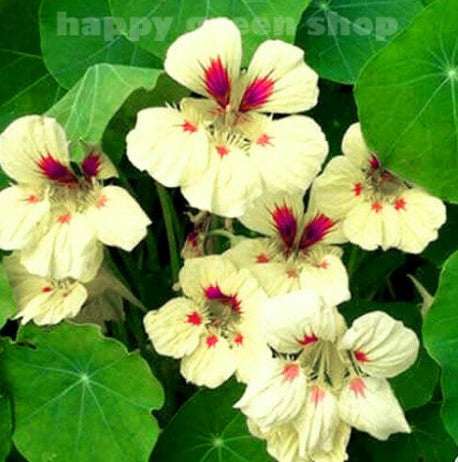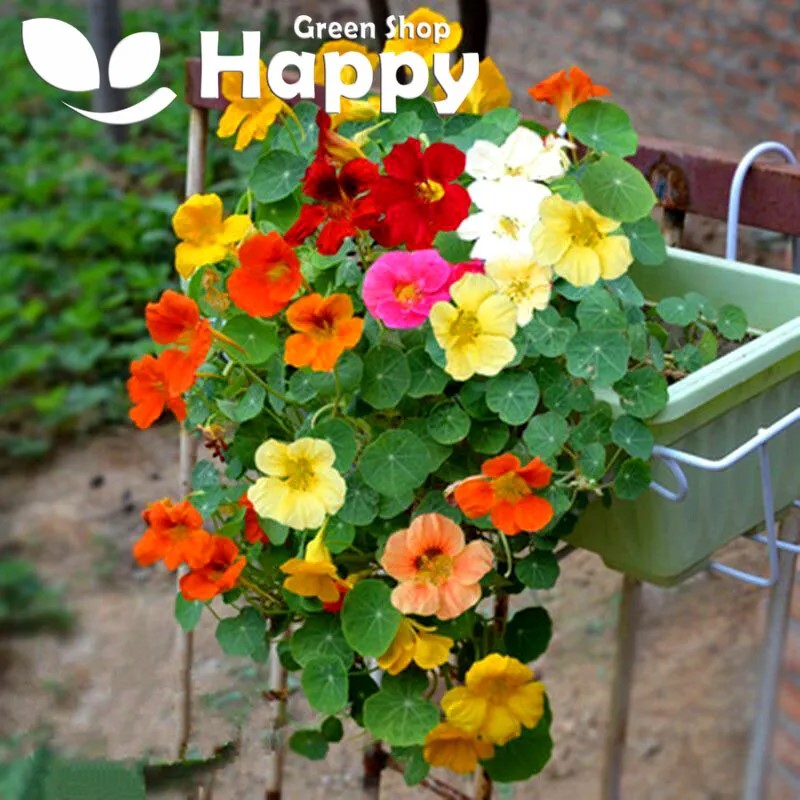Sort by:
435 products
435 products
Nemesia 'Prince' Orange – Seeds
(Nemesia strumosa)
Nemesia 'Prince' Orange produces masses of fiery orange blooms that add a splash of brilliance to beds, borders, containers, and window boxes. Compact and free-flowering, it is perfect for summer displays, offering a long blooming season and a cheerful burst of color.
Why Grow Nemesia 'Prince' Orange?
-
Bright, vibrant orange blooms with strong garden presence
-
Compact habit – great for containers and bedding
-
Long-flowering from early summer through autumn
-
Easy to grow and care for
Key Features
-
Type: Half-hardy annual
-
Height: 20–25 cm
-
Spread: 20–25 cm
-
Blooms: June–October
-
Position: Full sun to partial shade
-
Soil: Fertile, well-drained soil
Ideal For
-
Bedding schemes
-
Patio pots & containers
-
Edging paths & borders
-
Bright summer garden displays
Sowing & Growing
-
Sow indoors: February–April in trays or pots
-
Lightly cover seeds, keep moist, and maintain warmth (15–20°C)
-
Transplant seedlings when large enough to handle
-
Harden off and plant outdoors after frost risk has passed
-
Space plants 15–20 cm apart
-
Deadhead to prolong flowering
Nemesia 'Carnival' Mixed – Seeds (Nemesia strumosa)
A compact and free-flowering annual, Nemesia 'Carnival' produces masses of cheerful, brightly colored blooms throughout summer. Its bushy, neat habit makes it ideal for edging, low borders, containers, and window boxes. A reliable choice for continuous seasonal color.
Highlights
-
Richly colored blooms in a vibrant mix
-
Compact, bushy plants for neat displays
-
Long flowering period from early summer
-
Easy to grow annual, suitable for beginners
-
Thrives in beds, borders, and containers
Key Features
-
Botanical Name: Nemesia strumosa
-
Variety: 'Carnival' Mixed
-
Seed Count: Approx. seeds per pack
-
Height/Spread: 20–25 cm tall
-
Position: Full sun, well-drained soil
-
Flowering Period: Summer to early autumn
Perfect For
-
Bedding schemes and cottage gardens
-
Patio pots, containers, and window boxes
-
Low-growing borders and edging
-
Adding vibrant color to garden displays
Sowing Instructions
-
Sow indoors Feb–April at 15–20°C
-
Surface sow seeds; press lightly into soil (do not cover)
-
Germination: 7–14 days
-
Transplant seedlings when large enough to handle, spacing 15–20 cm apart
-
Harden off and plant outdoors after last frost
Nasturtium 'Tom Thumb Alaska Salmon' Seeds (Tropaeolum nanum)
Add a splash of elegance with Nasturtium 'Tom Thumb Alaska Salmon'. Compact and easy to grow, this variety features salmon-pink blooms against striking variegated foliage, creating a stunning contrast in borders, containers, or hanging baskets.
What Makes It Special
-
Unique salmon blooms with decorative marbled leaves
-
Dwarf, compact habit—perfect for small spaces
-
Edible flowers and leaves with a peppery flavor
Key Features
-
Botanical name: Tropaeolum nanum
-
Half-hardy annual
-
Height: 20–30 cm
-
Spread: 25–30 cm
-
Flowering: June–September
Ideal For
-
Containers, window boxes, and borders
-
Edible gardens and companion planting
-
Adding vibrant color to small spaces
Sowing
-
Sow indoors: March–April, 1 cm deep in pots or trays
-
Germination: 10–14 days at 15–18°C
-
Harden off and transplant after last frost in sunny spot
-
Direct sow outdoors: April–May in final position
Nasturtium Tom Thumb ‘Black Velvet’ – Seeds (Tropaeolum majus nanum)
Bring dramatic elegance to your garden with Nasturtium Tom Thumb ‘Black Velvet’, a striking dwarf variety featuring deep maroon-black velvety flowers contrasted by fresh green foliage. Compact and bushy, this nasturtium is excellent for containers, borders, and small gardens. Both the flowers and leaves are edible, adding ornamental and culinary value to your planting.
Highlights
-
Rare deep maroon-black blooms with velvety texture
-
Compact dwarf growth, ideal for pots and edging
-
Easy to grow and low-maintenance
-
Edible flowers and foliage
Key Features
-
Botanical Name: Tropaeolum majus nanum
-
Height: 20–30 cm (dwarf)
-
Position: Full sun to partial shade
-
Flowering: Summer to early autumn
Perfect For
-
Containers and pots
-
Borders and edging
-
Edible and ornamental gardens
-
Pollinator-friendly planting
Sowing Instructions
-
Sow directly outdoors after the last frost or indoors 4–6 weeks before planting out
-
Plant seeds 1–2 cm deep in well-drained soil
-
Space plants 20 cm apart
-
Germination: 10–14 days at 15–20°C
-
Flowers appear 8–10 weeks after sowing
Nasturtium 'Honolulu' Seeds (Tropaeolum nanum)
Nasturtium 'Honolulu' is a charming dwarf annual with bright, cheerful flowers in shades of red, orange, and yellow. Its compact growth habit makes it ideal for containers, window boxes, and small garden beds. Easy to grow and low-maintenance, it adds a splash of vibrant color while attracting pollinators.
What Makes It Special
-
Bright, cheerful blooms in red, orange, and yellow
-
Compact, dwarf growth ideal for small spaces and containers
-
Easy to grow and low-maintenance
-
Attracts pollinators like bees and butterflies
Key Features
-
Botanical name: Tropaeolum nanum
-
Variety: 'Honolulu'
-
Seed count: Approx. seeds per pack
-
Height/Spread: 15–25 cm tall, 20–30 cm spread
-
Position: Full sun; well-drained soil
-
Flowering period: June–September
Ideal For
-
Containers, window boxes, and small garden beds
-
Borders and edging
-
Pollinator-friendly gardens
-
Brightening patios and terraces
Sowing Instructions
-
When to sow: March–May indoors or outdoors
-
How to sow:
-
Sow seeds 1–2 cm deep in seed trays or directly in pots
-
Germination occurs in 7–14 days at 18–22°C
-
-
Transplanting: Plant seedlings outdoors after frost, spacing 15–20 cm apart
-
Care: Water moderately; remove faded flowers to encourage continuous blooming
Nasturtium Dwarf ‘Night and Day’ – Seeds (Tropaeolum majus nanum)
Bring vibrant color and edible charm to your garden with Dwarf Nasturtium ‘Night and Day’, a compact variety perfect for beds, borders, and containers. This mix features striking flowers in contrasting shades of deep reds, oranges, yellows, and cream, creating a bold and cheerful display. Both flowers and leaves are edible, adding a peppery kick to salads and garnishes.
Highlights
-
Compact, bushy growth, ideal for small spaces
-
Bright, bi-colored blooms in red, orange, yellow, and cream
-
Edible flowers and leaves
-
Thrives in poor soil and sunny locations
Key Features
-
Botanical Name: Tropaeolum majus nanum
-
Height: 20–30 cm (dwarf variety)
-
Sun: Full sun to partial shade
-
Flowering: Summer to early autumn
Ideal For
-
Garden beds, borders, and containers
-
Edible flower gardens
-
Pollinator-friendly plantings
-
Small-space gardens
Sowing Instructions
-
Sow indoors or directly outdoors after last frost
-
Plant 1–2 cm deep in well-draining soil
-
Space 15–20 cm apart
-
Germination: 7–14 days at 18–20°C
-
Flowers: 8–10 weeks after sowing
Nasturtium ‘Out Of Africa’ – 60 Seeds (Tropaeolum majus)
Add a unique touch to your garden with Nasturtium ‘Out Of Africa’, a rare variety admired for its strikingly variegated foliage and vibrant flowers. The creamy-white marbled leaves provide a beautiful backdrop for the classic nasturtium blooms in shades of orange, red, and yellow. A vigorous yet easy-to-grow plant, perfect for borders, beds, hanging baskets, or edible gardens.
Highlights
-
Distinctive cream-variegated leaves with colorful flowers
-
Long-lasting blooms throughout summer and autumn
-
Edible flowers and foliage – peppery flavor for salads and garnishes
-
Hardy and low-maintenance
Key Features
-
Botanical Name: Tropaeolum majus
-
Seed Count: 60
-
Height: 30–40 cm
-
Position: Full sun to partial shade
-
Flowering Period: Summer to first frost
Perfect For
-
Adding foliage contrast to beds and borders
-
Hanging baskets and containers
-
Edible gardens and pollinator-friendly planting
-
Cottage and ornamental gardens
Sowing Instructions
-
Sow indoors 4–6 weeks before last frost or directly outdoors after frost risk has passed
-
Plant seeds 1.5–2 cm deep in well-drained soil
-
Space plants 25–30 cm apart
-
Germination: 10–14 days at 15–20°C
-
Flowers in 8–10 weeks after sowing
Nasturtium ‘Lady Bird’ Mix – Seeds (Tropaeolum majus nanum)
The Nasturtium ‘Lady Bird’ Mix is a charming dwarf blend with bright golden-yellow blooms beautifully flecked and spotted with deep red. Compact and free-flowering, this variety is ideal for borders, edging, and containers, while also being edible—both flowers and leaves add color and flavor to summer salads.
Why Grow ‘Lady Bird’ Mix?
-
Unique yellow blooms with striking red markings
-
Compact, bushy habit – perfect for small spaces
-
Long-lasting summer flowers
-
Edible flowers and leaves with a peppery taste
Key Features
-
Type: Half-hardy annual
-
Height: 25–30 cm
-
Flowering: June–October
-
Position: Full sun, poor to average soil
-
Uses: Borders, pots, window boxes, edible gardens
Ideal For
-
Bright edging in garden beds
-
Patio pots and window boxes
-
Edible landscapes and salad garnishes
Sowing & Growing
-
Sow indoors: March–April in pots or trays
-
Sow outdoors: April–June directly in soil
-
Germination: 10–14 days at 15–20°C
-
Space plants 20–25 cm apart
-
Prefers poor soil for best flowering
Nasturtium Dwarf ‘Whirleybird’ Double – Seeds (Tropaeolum nanum)
Add a burst of color and playful texture to your garden with Dwarf Nasturtium ‘Whirleybird’ Double. This charming variety produces double-layered, vibrant flowers in shades of orange, red, and yellow, creating a striking display. Compact and bushy, it’s ideal for borders, containers, or small garden spaces. Both the flowers and leaves are edible, perfect for salads and garnishes.
Highlights
-
Compact dwarf growth, perfect for small spaces
-
Double blooms in bright, cheerful colors
-
Edible flowers and leaves
-
Thrives in sunny, well-draining locations
Key Features
-
Botanical Name: Tropaeolum nanum
-
Height: 20–30 cm (dwarf variety)
-
Sun: Full sun to partial shade
-
Flowering: Summer to early autumn
Ideal For
-
Small garden beds, containers, and borders
-
Edible flower gardens
-
Pollinator-friendly gardens
-
Decorative accents in compact spaces
Sowing Instructions
-
Sow indoors or directly outdoors after the last frost
-
Plant 1–2 cm deep in well-draining soil
-
Space 15–20 cm apart
-
Germination: 7–14 days at 18–20°C
-
Flowers: 8–10 weeks after sowing
Showing 171/435




